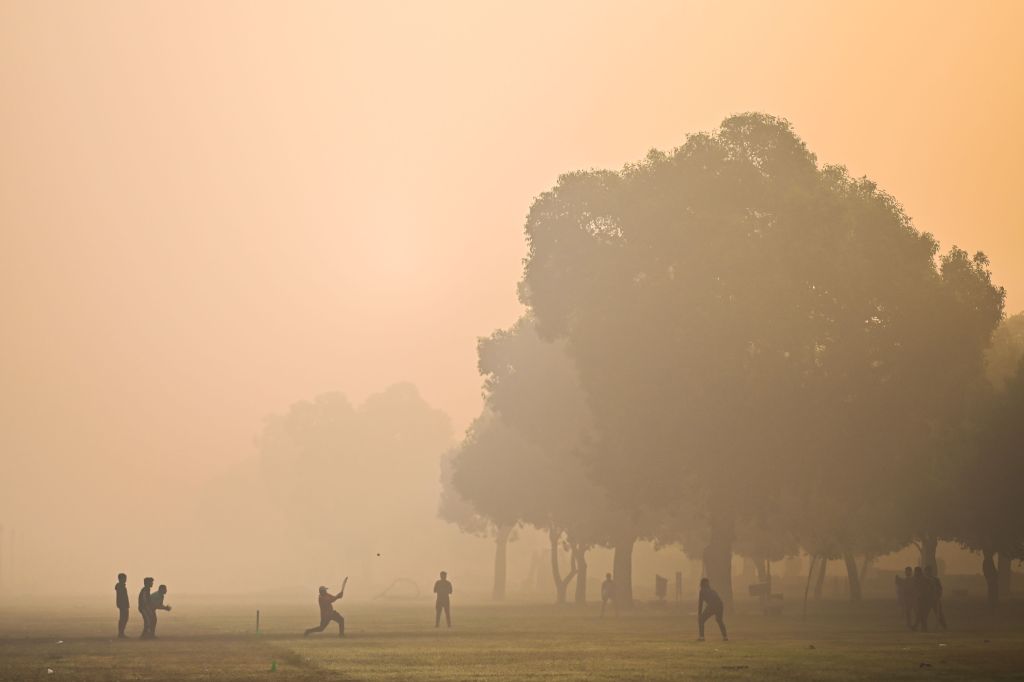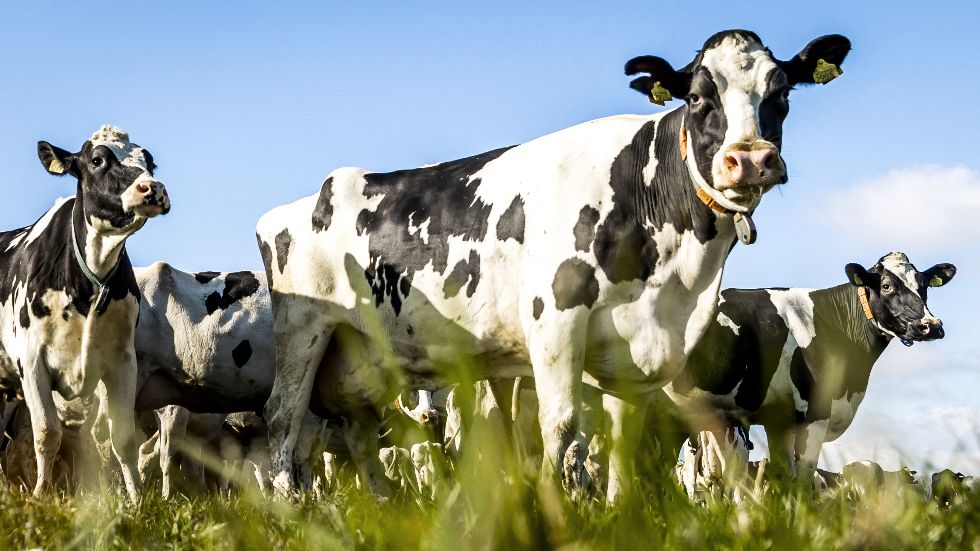Equilibrium/Sustainability — Presented by Southern Company — NHL accused of exploiting ‘Green’ program
Today is Thursday. Welcome to Equilibrium, a newsletter that tracks the growing global battle over the future of sustainability. Subscribe here: digital-staging.thehill.com/newsletter-signup.
An environmental watchdog is accusing the NHL of exploiting its sustainability program, NHL Green, “to promote super greenhouse gases as environmentally sustainable during a climate emergency.”
The NHL, which has long touted its connection to nature, works with the company Chemours to endorse Opteon — a product that contains hydrofluorocarbon refrigerants, which have a global warming potential far higher than ammonia, the current standard, as The New York Times reported.
Disingenuous marketing may be encouraging rinks across North America to use the product despite its dangers to the environment, the Agency warned in a new report, first covered by the Times.
“The N.H.L.-Chemours partnership poses serious ethical concerns by disseminating a dangerously misleading message that it is sustainable to choose a potent greenhouse gas over a refrigerant with zero climate impact,” the report said, referring to ammonia.
An NHL spokesperson declined to comment to the Times about the report.
Today we’ll head across the world, to New Delhi, India, where another potent pollution incident is making the air unbreathable. Then we’ll consider the E.U.’s recent attempt to keep its leather seats and Swiss chocolates from contributing to tropical deforestation — and why that’s such a headache.
For Equilibrium, we are Saul Elbein and Sharon Udasin. Please send tips or comments to Saul at selbein@digital-staging.thehill.com or Sharon at sudasin@digital-staging.thehill.com. Follow us on Twitter: @saul_elbein and @sharonudasin.
Let’s get to it.
New Dehli in partial lockdown from air pollution

Residents of India’s capital city this week have been enduring a partial lockdown — not because of the coronavirus pandemic, but due to life-threatening levels of air pollution.
The air was already so smoggy last weekend that officials decided to close schools in New Delhi for the week, opting for virtual classes so that “children don’t have to come out and breathe polluted air,” Delhi chief minister Arvind Kejriwal said at a press briefing, according to CNN.
Following Supreme Court orders, the country’s Commission for Air Quality Management shut down five coal-fired power plants while restricting truck operations and halting construction, CNBC reported. The Commission also said that half of government employees should work at home through Sunday.
What’s going on? New Delhi is well-known for suffering from air pollution year-round. But the problem becomes particularly acute during the fall and winter months, according to The Associated Press. In 2020, 13 of the 15 most polluted cities in the world were in India, the AP reported.
On Wednesday, things got even worse: The concentration of fine particulate matter — PM 2.5, or particles less than 2.5 microns in diameter – was almost 30 times the levels that the World Health Organization deems safe, according to the AP.
Northern India’s “autumn spike in air pollution relates in part to the annual burning of crop residue in fields,” Deborah Seligsohn, a Villanova University air pollution expert, told the AP.
But this spike is not just due to crop burning. Other sources include vehicle emissions, trash burning, electricity generation, and industries like steelmaking and brick kilns, the AP reported.
There were 773 nearby farm fires as of Thursday, but these burns only accounted for 2 percent of New Delhi’s PM 2.5 pollution, the Times of India reported, citing the Ministry of Earth Sciences.
In fact, the crop burn contribution was negligible this time, according to the Times, because winds coming from the East were largely preventing the entrance of these pollutants.
A MESSAGE FROM SOUTHERN COMPANY
At Southern Company, we achieved our interim net zero energy goal ten years early. Today, we continue our work toward a net zero future. Learn more.
‘APATHY TOWARD HEALTH AND LIFE’
When will there be some respite? Strong winds were expected to bring some relief by Sunday, at which time the air quality would likely shift from “very poor” to simply “poor,” the Times of India reported, citing the central government’s Air Quality Early Warning System.
But the city’s air quality remained “very poor” on Thursday, The Hindustan Times reported. Data from the country’s Central Pollution Control Board showed that the hourly air quality index (AQI) for New Delhi was 344 on Thursday morning, slightly down from Wednesday’s 375.
What’s an AQI? The U.S. describes an AQI as “a yardstick that runs from 0 to 500,” with values over 300 usually indicating hazardous air quality. But many air pollution apps provide more ominous interpretations of the readings.
What do the apps say? The AQI India app, from New Delhi-based PureLogic Labs, deems 301-400 “severe,” adding that exposure “can cause chronic morbidities or even organ impairment,” and 401-500 “hazardous,” with the warning: “Beware! Your life is in danger. Prolonged exposure can lead to premature death.”
The Paris-based Plume Labs app goes even further, to define AQI levels in New Delhi as an “Airpocalypse,” warning of “immediate and heavy effects on everybody.”
But regardless of the precise numbers, people are pointing fingers. India’s central government accused city officials of inaction, and vice versa, according to The New York Times. The Supreme Court stepped in to facilitate factory closures and cessation of crop burning, but deep partisanship among officials has curbed progress on air pollution, the Times reported.
Last words: “It’s really sad for a nation where every time there is a health emergency the Supreme Court needs to intervene,” Jai Dhar Gupta, who sells air pollution mitigation tools, told the Times. “That tells you everything about the apathy toward the health and life in our country,”
EU goes after cow launderers

The European Commission — the E.U.’s executive arm — proposed new laws on Wednesday aimed at cutting tropical deforestation linked to six consumer commodities: beef, soy, palm oil, wood, cocoa and coffee.
First words: “If we expect more ambitious climate and environmental policies from partners, we should stop exporting pollution and supporting deforestation ourselves,” Virginijus Sinkevičius, commissioner for environment, oceans and fisheries, said in a statement.
What would producers have to do? Only do business with legal farms that don’t deforest, and provide GPS-tagged coordinates to show where their commodities were grown, the statement said.
That’s a tall order: By its very nature, agriculturally driven deforestation occurs on frontiers at the far end of long and convoluted supply chains.
In Brazil, for example, a loophole in the country’s environmental monitoring laws mean that the skins of cows raised on pastures cleared from the Amazon rainforest are ending up as high-end leather seats in American SUVs, as The New York Times reported — despite the fact that the Brazilian leather processors who sell them have strict zero-deforestation policies.
HOW TO LAUNDER A COW HIDE
So how does it happen? By a process similar to money laundering, in which “dirty” cows raised on deforested plots are sold to ranchers on legal, non-deforested plots, who mix them in with “clean” cows and sell them to slaughterhouses, where the hides disappear into the broader supply. The products are then ultimately sold to huge conglomerates like JBS — the world’s largest leather processor — Vancouros and Viposa, the Times reported.
From there, the hides end up in the hands of companies like seatmaker Lear, which sells the luxury seats popular in cars like the Cadillac Escalade, the Times reported.
Did the leather-makers know about this? They say no — and all three use similar tracking systems, which they instituted in 2009 after Greenpeace found their operations to be a major driver of Amazon deforestation, the Times reported that year.
But those tracking systems only verify the last farm the cattle came from — creating an easy point of entry for dirty beef and leather into the supply chain. In October, Brazilian prosecutors charged that JBS had bought 301,000 animals between January 2018 and 2019 from farms with “irregularities” in their approach to illegal deforestation, or nearly a third of all the cattle it bought from the Amazon state of Para, Reuters reported.
If the new E.U. laws only force disclosure of the last farmer to sell to a wholesaler, then that system would be vulnerable to this loophole as well.
Is it just cattle? No, although beef and leather products are estimated to be the largest driver of deforestation worldwide, accounting for 41 percent of total deforestation, by one study, and 80 percent in the Amazon.
Chocolate is a problem too: In Côte d’Ivoire, the world’s largest cocoa exporter, the situation is similar: Small independent producers sell to regional farmer co-ops, who sell on to big corporations like Nestle, Mars Inc and Cargill — all of whom “source at least a portion of their beans from protected forests,” Reuters reported.
In the ruins of a cocoa-buying hub in Bandikro, or “Bandit Town,” an illegal cocoa planting settlement of 10,000 people, the Reuters journalist found a sign and receipt book from SCAES, a farmer’s coop that sells to Cargill, which sells it on Nestle.
That’s not just a problem for the forest: It’s also a dangerous reputational threat to the marketability of tropical commodities that aren’t a product of deforestation — and the countries and companies that sell them.
Last words: “Listen, we have the national interest in mind,” Ivorian Lt. Olivier Nogbo told Reuters, leading a patrol of AK-47 armed forest rangers. “It’s not for 10,000 people that we’re going to allow the environment to be destroyed.”
A MESSAGE FROM SOUTHERN COMPANY
At Southern Company, we achieved our interim net zero energy goal ten years early. Today, we continue our work toward a net zero future. Learn more.
Thursday Throwdowns

Tensions, provocations and general trouble.
Climate-denial ads ran on Facebook during COP26 conference
- Despite Facebook’s promises to “combat climate misinformation,” one ad on the platform — seen by 200,000 people — called man-made climate change a “hoax,” Reuters reported.
- “Apparently we’re just supposed to trust our new authoritarian government” on climate science, conservative commentator Candace Owen said in another.
- Facebook does not have a policy on climate misinformation, according to Reuters.
EPA’s cyber oversight of water is insufficient: report
- The Environmental Protection Agency’s oversight of cybersecurity in the water sector may be lagging behind a surge in ransomware attacks, The Wall Street Journal reported.
- Much more federal funding and stronger security standards are critical, Mark Montgomery, of The Foundation for Defense of Democracies think tank, told the Journal.
- The Foundation, in a new report, is calling to increase the EPA’s budget for cybersecurity and disaster management to as much as $45 million, as well as increase staff, training and funding for utilities, according to the Journal.
Biden accuses oil companies of price-gouging Americans
- President Biden has ordered the Federal Trade Commission “to consider whether illegal conduct is costing families at the pump,” The Hill reported.
- The president cited an “unexplained large gap” between prices of finished gasoline, which are up 3 percent, and those of unfinished gas — gas not yet blended into a final product — which are down 5 percent, The Wall Street Journal reported.
- But that sort of discrepancy is normal, as Kevin Book of consultancy Clearview Energy Partners told Reuters.
- “There is an up-like-a-rocket, down-like-a-feather phenomenon that happens at the pump and it frustrates politicians,” he said.
If you’re up very late tonight — or very early tomorrow — make sure to look out for a partial lunar eclipse, which astronomers expect to be the longest one in several centuries: almost 3.5 hours, according to NBC. The peak of the eclipse is expected to occur at around 4 a.m. ET.
Please visit The Hill’s sustainability section online for the web version of this newsletter and more stories. We’ll see you on Friday.
{mosads}
Copyright 2024 Nexstar Media Inc. All rights reserved. This material may not be published, broadcast, rewritten, or redistributed..













